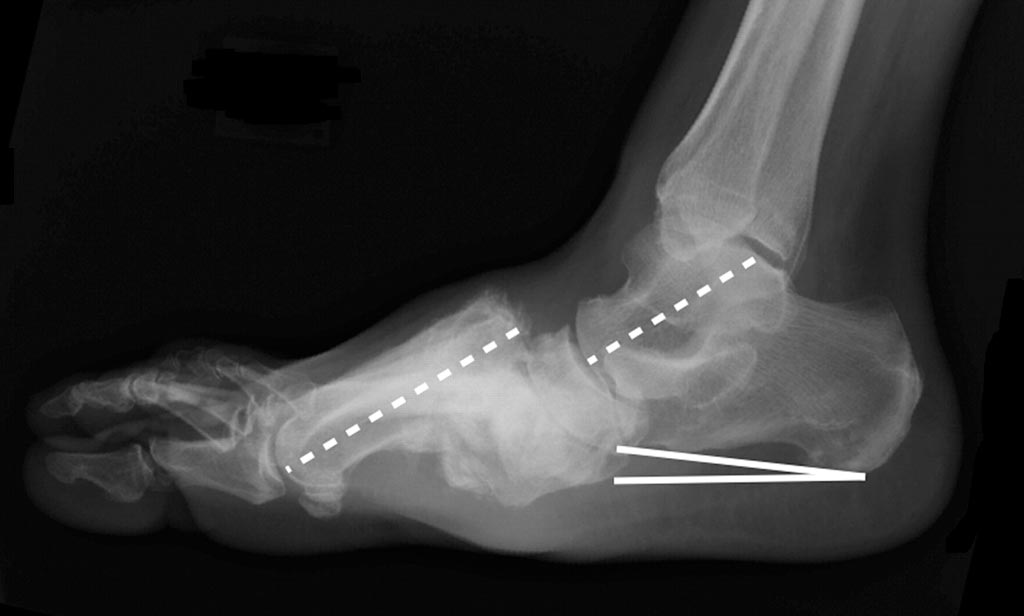Diabetic Charcot Foot Surgery Shows High Success Rate
By HospiMedica International staff writers
Posted on 26 Dec 2017
Nearly 80% of diabetic patients with severe Charcot foot inflammation are able to walk normally again following surgery, according to a new study.Posted on 26 Dec 2017
Researchers at Loyola University Health System (Chicago, IL, USA) conducted a retrospective study of 214 patients who underwent surgical reconstruction of deformities associated with mid-tarsal Charcot foot arthropathy over a 12-year period. Surgery included resection of infection when present, Achilles tendon lengthening, correction of the structural deformity by wedge resection, and immobilization with a three-level static circular external fixator. Clinical outcomes were based on limb salvage, resolution of infection, and the functional metric of the ability to walk with commercially available therapeutic footwear.

Image: Charcot foot deformity with dislocation of the tarsometatarsal joint (Photo courtesy of the American Diabetes Association).
The results revealed that 173 of the 223 feet operated on had good or excellent outcomes, defined as being free of ulcers and infections and able to walk outside using off-the-shelf therapeutic footwear and custom foot braces. Success rates varied according to the type of foot deformity; patients with a valgus deformity pattern had an 87% success rate; patients with a dislocation pattern deformity had a 70.3% success rate; and those with a varus deformity pattern had a 56.3% success rate. Seven patients died of unrelated causes within a year of surgery, and 15 underwent partial- or whole-foot amputations. The study was published on November 27, 2017, in Foot and Ankle International.
“Operative correction of the acquired deformity of Charcot foot arthropathy was performed with a goal of improving quality of life. The clinical outcomes achieved in this retrospective case series appear to support the modern paradigm of operative correction of deformity in this complex patient population,” concluded lead author orthopedic surgeon Michael Pinzur, MD. “This realistic appreciation of outcome expectations should both be helpful in counseling patients on the risk-benefit ratio associated with surgery, and provide a benchmark to measure newer strategies of treatment.”
First described in 1883, diabetic Charcot foot is characterized by varying degrees of bone and joint disorganization secondary to underlying neuropathy, trauma, and perturbations of bone metabolism. The bones are weakened enough to fracture, and with continued walking, the foot eventually deforms. The hallmark deformity is midfoot collapse, described as a “rocker-bottom” foot, although it can appear in other joints and with other presentations.
Related Links:
Loyola University Health System














